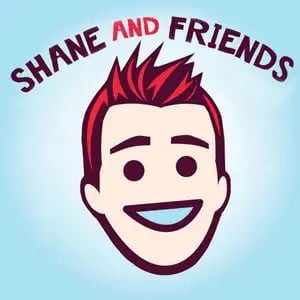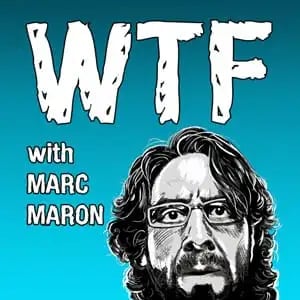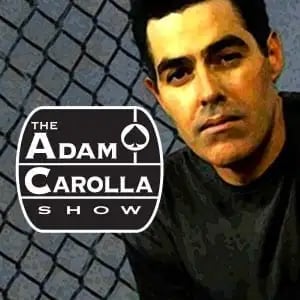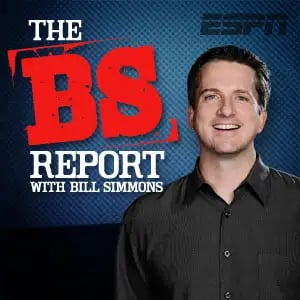To all you wannabe podcasters with dreams of greatness, I have good news and bad news.

Which do you want first?
The good news
People love podcasts
Podcast consumption has been on the rise. One in three Americans listened to podcasts last year. And people who listen weekly tend to follow five to six podcasts at a time.
Also, the barriers of entry for podcasting are lower than ever. You can start one with a headset microphone and free software. Or you can buy a quality mic for $119 and software for $49. Still really cheap.
and now the bad news
Only the heavyweights make the big bucks, and even they don’t make that much
So, to show how many downloads you need to run with the big guns, here are the ten most downloaded podcasts of 2014, according to Apple.
- NPR Programs: Fresh Air Podcast, NPR
- Stuff You Should Know, HowStuffWorks.com
- The Joe Rogan Experience, Joe Rogan
- The Adam Carolla Show, Carolla Digital
- This American Life, WBEZ
- Radiolab from WNYC, WNYC
- Freakonomics Radio, WNYC
- The Nerdist, Nerdist Industries
- NPR: Planet Money Podcast, NPR
- NPR: Wait Wait… Don’t Tell Me! Podcast, NPR
And here’s a list of the top earners of 2014, aggregated from other sources.
1. This Week in Tech
Downloads: 500,000 / episode
Revenue: $50,000 / episode
2. Shane And Friends
Downloads: 250,000 / episode
Revenue: $15,250 / episode
($4,500 for the 20-second pre-roll, $6,250 for the 60-second mid-roll, $4,500 for the 20-second post-roll)
3. WTF with Marc Maron
Downloads: 250,000 / episode
Revenue: $14,640 / episode
($4,320 for the 20-second pre-roll, $6,000 for the 60-second mid-roll, $4,320 for the 20-second post-roll)
4. The Adam Carolla Show
Downloads: 250,000 / episode
Revenue: $14,500 / episode
5. ESPN: The B.S. report with Bill Simmons
Downloads: 250,000 / episode
Revenue: $14,000 / episode
Wait, that’s all they make?
You might notice that despite being famous, these podcast creators aren’t getting rich off their work. That’s because getting exact numbers on how many people are listening to a podcast is difficult.
You know how many people download it, but some people download and never listen. Other people listen with a car full of friends. Because of that, it’s harder to get advertisers to pay the big bucks to advertise on a podcast.
And as I’ll break down later, if you want to become a full-time podcaster you’ll need about 500,000 listeners to make a livable salary.
Even Serial, the most popular podcast of all time, had to ask for donations, much to the surprise of host Sarah Koenig.
In case you missed it
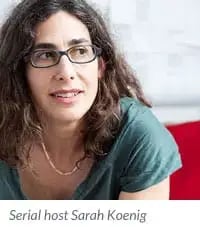 Serial was the This American Life podcast spinoff that dove into the murder investigation of Hae Min Lee, an 18-year-old student at Woodlawn High School in Baltimore, MD. After two court trials, Lee’s ex-boyfriend Adnan Masud Syed was convicted of her murder on February 25, 2000.
Serial was the This American Life podcast spinoff that dove into the murder investigation of Hae Min Lee, an 18-year-old student at Woodlawn High School in Baltimore, MD. After two court trials, Lee’s ex-boyfriend Adnan Masud Syed was convicted of her murder on February 25, 2000.
Even though Serial didn’t “prove” who killed Hae Min Lee, frustrating some listeners and inspiring a hilarious spoof (among many), it did uncover mounds of evidence that cast doubt on the conviction.
Serial has signed on for two more seasons, but just over halfway through the first season things looked less certain.
Koenig asked for donations in Episode Nine. At that point, Serial had an estimated 1.5 million listeners, a number that went on to nearly double by the end of the season.
“I did not see this coming,” Koenig said, explaining that she was amazed that she had to ask for money for what was becoming the world’s most popular podcast.
If you’re shocked by this, don’t be. Here’s why Serial needed money, or at least looked like it did at the time.
The breakdown
Serial had about 3.4 million downloads per episode when it concluded in December of last year, CNN reported. However, it had less than half that by Episode Nine.
If you listened to Serial, you probably noticed that the podcast ran two sponsorship advertisements: one for MailChimp, the other for Squarespace. Each came at the beginning of the episode and lasted 15 seconds.
Both MailChimp and Squarespace were advertisers from the beginning, so the cost was probably negotiated before anyone knew how successful Serial would be.
We weren’t able to find out how much Serial charged Squarespace and MailChimp, but the price of podcast ads are calculated by CPMs (cost per 1,000 impressions).
But like I said, podcast analytics are tricky. Web advertisers can only see who views their ad and how many people download an episode.
A low ad price for Serial back in the early days might have been a $10 CPM for each advertisement, according to a post on Medium by CNN V.P. Tyler Moody.
Another report in New York Magazine estimates podcast advertisements are selling closer to $20-$40 CPM.
At a $10 CPM, each episode would have brought in $30,000. Since there were 12 episodes, Serial could have been making $360,000 on the low end, which is hardly enough to pay everyone working on the show and operating costs.
Now let’s look at the high-end CPM with the actual number of average downloads per episode by the end of the season.
At $40 per CPM and 3,400,000 downloads, Serial could have made $272,000 per episode, which comes out to $3.3 million for the season. More than enough to cover the costs.
Serial’s first season had five staff members: host, executive producer, producer, manager, and editorial advisor. Their salaries made up the biggest cost of the podcast.
And because Ira Glass (Serial’s editorial advisor) and Julie Snyder (Serial’s executive producer) work in public radio, their salaries were published online. They make $146,000 base salary. The other employees most likely earn between $40,000 and $100,000.
So the total cost of salaries for the Serial team is probably between $412,000 and $592,000.
Ads and donations make up most podcast revenue
Other shows, like This American Life and design podcast 99% Invisible, also ask for donations… usually once a year or less. In fact, in 2012, 99% Invisible became the most-funded journalism Kickstarter project in Kickstarter’s history.
Some very established podcasts, like WTF with Marc Maron (who’s been podcasting since 2009) and The Dawn and Drew Show (which has been around since 2004), have gone “freemium”. That means charging subscribers for access to premium content, such as archival episodes.
Should you start a podcast?
Let’s assume you’d get paid $10 CPM and got 500,000 downloads. That’d come out to $5,000 per episode. Enough to survive, yes, but depending on how long you spend on each episode and the size of your team you wouldn’t be rolling in cash.
Then again, we’re talking about following your dream. If you can keep costs low, maybe it’s worth it.

